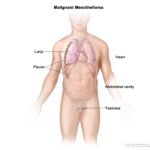When it comes to male pattern baldness, there are two essential medical treatment options that have received FDA approval for treatment: oral medication, or topical medication. There are pros and cons to both, so it’s important to understand the big picture before deciding on a treatment plan with your physician.
Topical Medication
The topical medication of choice is Rogaine, or minoxidil. The way minoxidil works is by directly applying the medication to the affected areas of the scalp. The treatment then has to sit for a while, in order to deliver enough stimulation to the impacted hair follicles to encourage regrowth of the dormant hair follicles.
One of the positive aspects of Rogaine is that a doctor visit isn’t required in order to get a prescription first. You can simply purchase the medication from your local drugstore or online. Another bonus is that Rogaine can be used by both men and women who notice visible hair loss, while many other hair loss treatments are aimed only at men. Although there may be side effects during use, these are generally limited to surface irritation, like itching or the development of flaky skin, rather than more widespread systemic issues.
One of the main complications of using minoxidil, besides the lengthier treatment time that’s required for full efficacy, is that the application is messy, and is not discreet. Applications are recommended twice daily, morning and night, with a soaking time up to four hours long at each session. Minoxidil treatment must be continued long-term; once treatment ceases, the hair loss will return to its pre-treatment state. Because of the chemical nature of this medication, some people also have reported the development of allergic reactions to the treatment.
Oral Medications
The other FDA-approved option for male baldness is Propecia, or finasteride. This medication comes in pill form, and is taken by mouth just once every day. The way it works is by affecting the hormones in the body to inhibit the development of DHT, the key hormone that plays a role in hair loss and its regrowth cycle.
The benefits of Propecia over Rogaine are pretty clear: one pill daily is far preferable to most people compared to twice-daily application followed by a couple hours of soaking. Plus, since the medication is available only by prescription, it’s possible that patients can get insurance payments to help absorb the cost. Very few men who have used Propecia have reported negative side effects, less than 2 percent, and results are often apparent after just a few months. Finasteride is only approved for use in men, however, and not in women who suffer from hair loss.
Working Together
It’s actually possible to combine treatments, using both Propecia and Rogaine simultaneously for maximum impact. Since one medication is topical and the other oral, they don’t run a risk of interacting negatively with each other. However, before beginning any type of treatment plan, it’s a good idea to double check with your doctor to make sure you’re on the right track.




